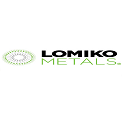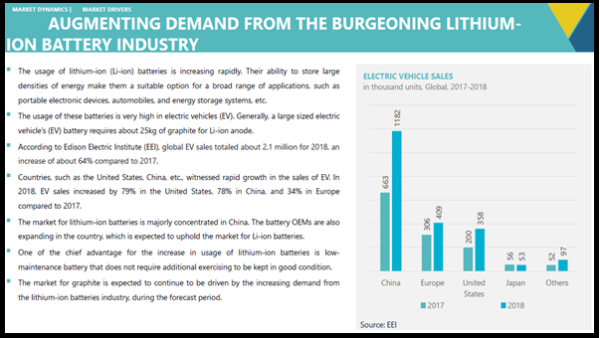
SPONSOR: Lomiko Metals is focused on the exploration and development of minerals for the new green economy such as lithium and graphite. Lomiko owns 80% of the high-grade La Loutre graphite Property , Lac Des Iles Graphite Property and the 100% owned Quatre Milles Graphite Property. Lomiko is uniquely poised to supply the growing EV battery market. Click Here For More Information

- According to research by BloombergNEF, European automakers and governments will move toward helping curb global warming with stricter carbon emissions regulations, which could force an electric-vehicle revolution.
In the United States, electric vehicles are primarily being purchased
by consumers that want to take action on their own. Fuel is cheap, the
country doesn’t have a real climate change plan, and large vehicles like
pickups are king. All of this means that there’s little incentive,
beyond the $7,500 federal tax credit, to purchase an EV. That, though,
isn’t the case in other countries like China and, soon to be Europe.
EV Revolution Coming This Year
According
to a report by Bloomberg and a forecast from BloombergNEF, Europe will
see an electric revolution in 2020. The outlet states that the country’s
government will soon look to cut carbon emissions from vehicles as part
of a plan to curb global warming. This, in turn, will force automakers
to introduce electric vehicles.
Bloomberg claims that sales of
electric cars are set to increase to 2.5 million units in 2020. That
figure represents an increase of 20 percent from 2019.
Just like this year, China will continue to lead the way forward for sales. But the country recently decided to reduce subsidies for EV owners,
which could help Europe gain a larger piece of the market. The outlet’s
forecasting claims that Volkswagen’s push to become an electric-vehicle
force will boost the number of electrified vehicles in Europe. In
total, the outlet expects 800,000 electric cars to be sold in Europe in
2020.
“The long-term future is really bright, but in the short
term we’re expecting growth to be relatively slow,” said Colin
McKerracher, an analyst at BloombergNEF. “You’re still in the middle of
this transition, from a market driven by direct subsidies toward one
driven by a combination of real consumer demand and other big policy
mechanisms.”
Better Prices, More Infrastructure Coming
Another
important aspect of electric vehicles that will help sales increase in
Europe are decreasing lithium-ion battery prices. The outlet states that
prices per kilowatt-hour will hit roughly $135 – approximately 13
percent lower than in 2019. With the increase of battery production,
better battery designs, and more sales, battery prices are expected to
tumble.
All of these things mean that more chargers will be
needed. Luckily, public chargers are expected to rise to 1.2 million, up
from 880,000 last year. The increase in chargers will come in part from
governments and energy companies looking to expand infrastructure to
support the increase in demand for electric cars.
Another
interesting trend to look at in 2020 include other forms of electrified
transportation. A few companies, even automakers, showcased flying electric cars at CES.
While it’s unlikely that one would come out in 2020, it’s likely
something that more companies will pursue this year. Other forms of
transportation, including boats could go electric in 2020, too.
SOURCE: https://www.futurecar.com/3749/EV-Buyers-Can-Expect-Cheaper-Batteries-and-More-Chargers-in-2020



